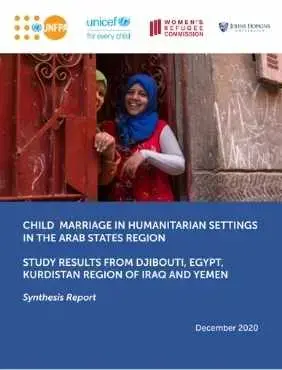Child marriage is a prominent concern across global contexts, especially in humanitarian settings. Globally, about one in five women were married as children. Girls who marry young face many adverse effects that negatively impact their health and well-being. About 90 percent of adolescent pregnancies are among married girls, which puts them at a greater risk of birth complications. Other studies have shown that child marriage is associated with lower educational attainment and poverty, often due to their resulting lack of vocational opportunities. Without these opportunities, girls married as children face a lifetime of poverty that perpetuates the practice of marrying children to relieve familial economic burden. They also have increased risk of mental health consequences due to social isolation, decreased autonomy and intimate partner violence. The Arab States region has shown quickly declining rates of child marriage compared to other regions of the world. However, current regional rates region show about one in six girls are married before the age of 18. There is now increased concern that the fragility resulting from the multiple conflicts in the region may also significantly impact rates of child marriage. Nine of ten countries with the highest rates of child marriage are considered fragile states. However, the relationship between fragility and child marriage is complex and not fully understood. There is a significant body of qualitative research to date that highlights factors that drive child marriage practices during conflict, suggesting that rates may increase. Although survey data exist on rates of child marriage in fragile states, they do not fully reflect the rates during, or resulting from, conflict.
Human Rights and Gender Equality
Sexual and reproductive health
What we do
Child Marriage in Humanitarian Settings in the Arab States Region

Publisher
UNFPA
Number of pages
22
Author
UNFPA
Publication
Child Marriage in Humanitarian Settings in the Arab States Region
Publication date
31 December 2020




